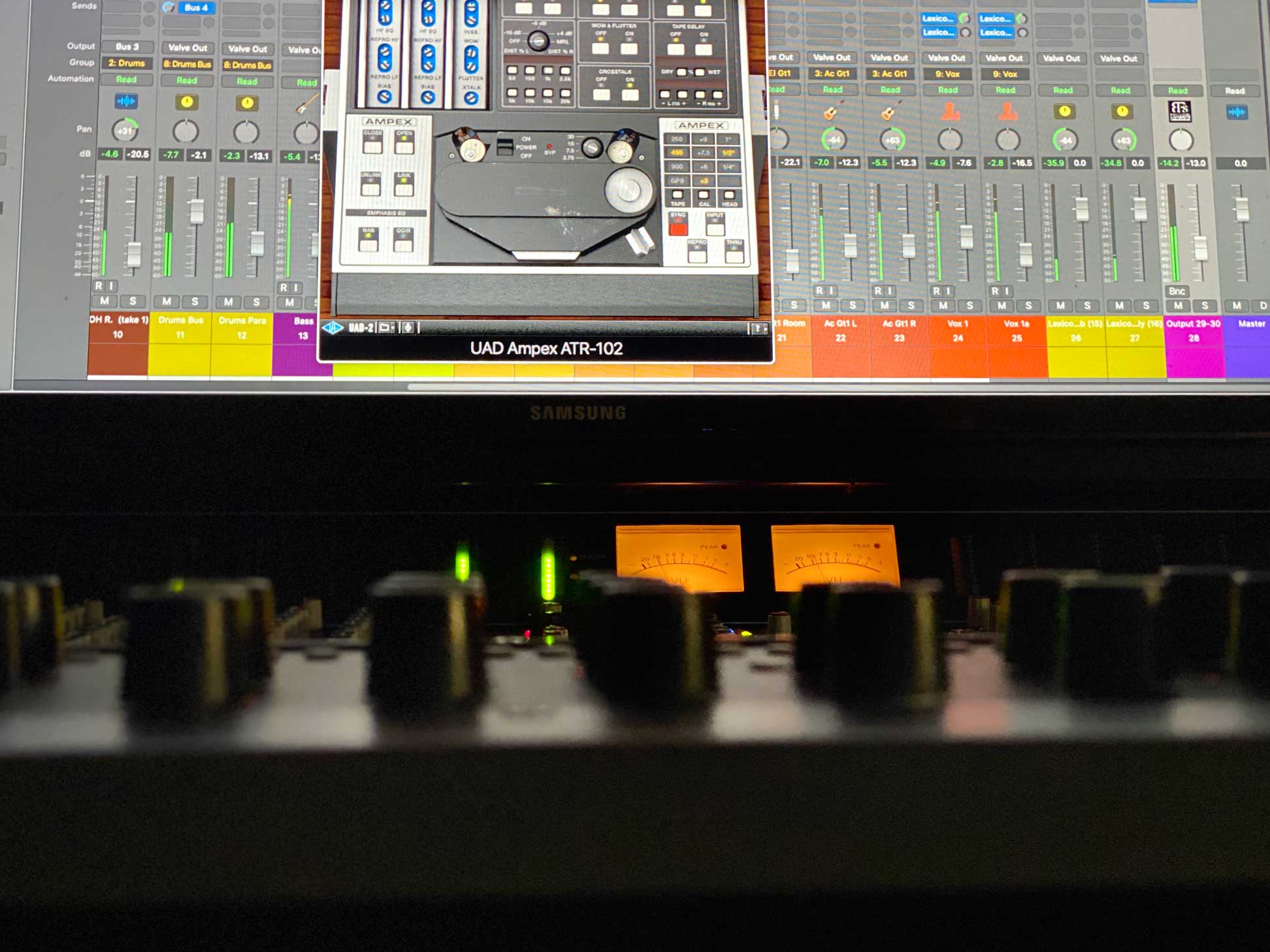
The best way to warm up mandolin recording

The advanced settings panel in Logic’s built-in Compressor plug-in contains side-chain equalisation facilities which can be very useful if you’re trying to sensitise (or desensitise!) the compressor to a mandolin’s picking transients.
There are ways to warm up a mandolin sound subjectively using compression, although none of them is likely to make as big an impact as EQ. Fast compression may be able to take some of the edge off a mandolin’s apparent tone, for instance, assuming the processing can duck the picking transients independently of the note-sustain elements. There are two main challenges in setting that up. Firstly you need to have a compressor which will react sufficiently to the front edges of the pick transients, so something with a fast attack time makes sense. Not all of Logic’s built-in compressor models are well-suited to this application, so be sure to compare them when configuring this effect — instinctively I’d head for the Class-A or FET models, but it’s always going to be a bit ‘suck it and see’. The second difficulty will be getting the compressor not to interfere with the rest of the sound. The release-time setting will be crucial here: it needs to be fast enough to avoid pumping artifacts, but not so fast that it starts distorting anything in conjunction with the attack setting. Automating the compressor’s threshold level may be necessary if there are lots of dynamic changes in the track, for similar reasons. Applying some high-pass filtering to the compressor’s side-chain (open the Logic Compressor plug-in’s advanced settings to access side-chain EQ, and select the ‘HP’ mode) may help too, because the picking transients will be richer in HF energy than the mandolin’s basic tone.
Another way to apparently warm up a mandolin is to take the opposite approach: emphasise its sustain character directly while leaving the pick spikes alone. In a normal insert-processing scheme, I’d use a fast-release, low-threshold, low-ratio (1.2:1-1.5:1) setting to squish the overall dynamic range. Beyond deciding on the amount of gain reduction, my biggest concern here would be choosing an attack time that avoided any unwanted loss of picking definition. In this case, shelving a bit of the high end out of the compression side-chain might make a certain amount of sense if you can’t get the extra sustain you want without an unacceptable impact on the picking transients.
Alternatively, you might consider switching over to a parallel processing setup, whereby you feed a compressor as a send effect, and then set it to more aggressively smooth out all the transients. The resulting ‘sustain-only’ signal can then be added to the unprocessed signal to taste (as long as you’ve got your plug-in delay compensation active to prevent processing delays from causing destructive phase cancellation). Using an analogue-modelled compressor in this role might also play further into your hands here, as analogue compressors do sometimes dull the high end of the signal significantly.






